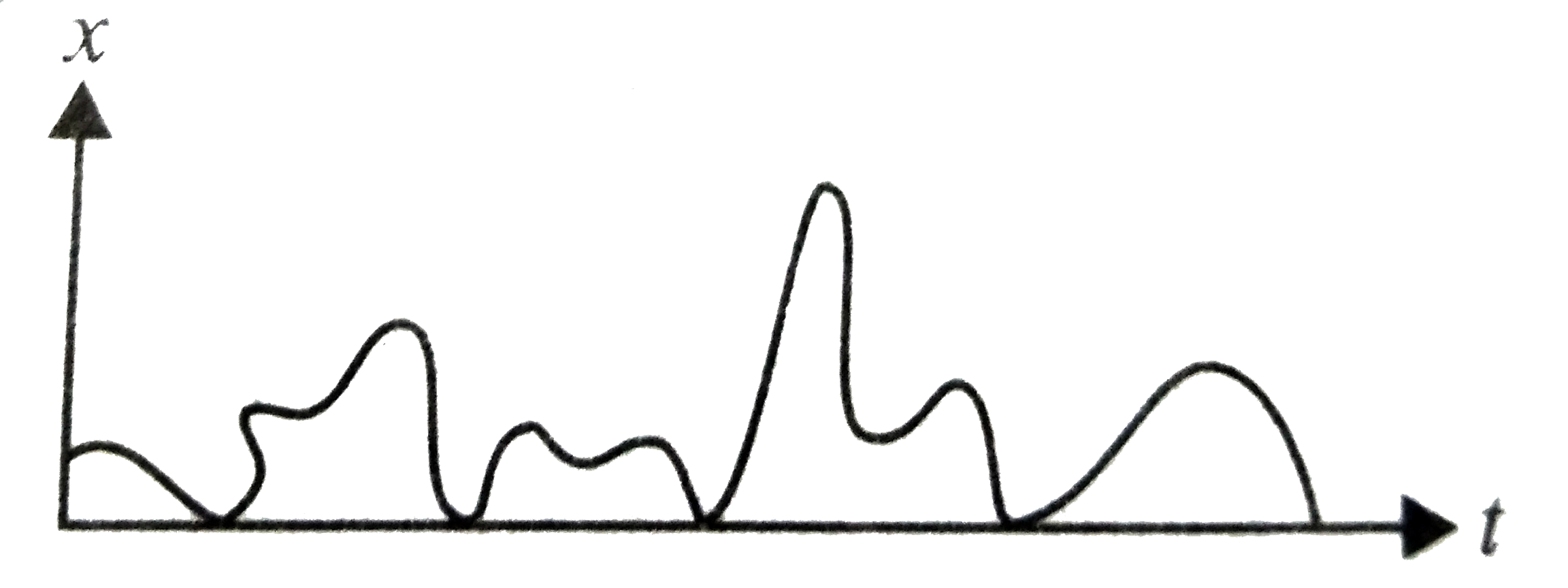If S, v and t respectively denote displacement, velocity and time, then which of the following graphs represents uniform motion?




The correct Answer is:A
To determine which graph represents uniform motion among the given options, we need to analyze the characteristics of uniform motion and how they relate to displacement-time and velocity-time graphs.
1. Understanding Uniform Motion:
- Uniform motion occurs when an object moves with a constant velocity. This means that the displacement of the object changes at a constant rate over time.
2. Analyzing Velocity-Time Graph:
- In a velocity-time graph, uniform motion is represented by a horizontal straight line. This indicates that the velocity remains constant over time.
- If the velocity is increasing or decreasing (i.e., the line is sloped), it indicates non-uniform motion.
3. Analyzing Displacement-Time Graph:
- In a displacement-time graph, uniform motion is represented by a straight line with a constant slope. The slope of this line represents the velocity.
- If the line is curved, it indicates that the velocity is changing, which means the motion is non-uniform.
4. Identifying the Correct Graph:
- From the options provided:
- Option 1: If this graph is a straight line with a constant slope, it indicates uniform motion.
- Option 2: If this graph shows increasing velocity, it indicates non-uniform motion.
- Option 3: If this graph shows constant displacement, it indicates that the object is at rest (velocity = 0).
- Option 4: If this graph shows decreasing velocity, it indicates non-uniform motion.
5. Conclusion:
- The graph that represents uniform motion is Option 1, as it shows a straight line with a constant slope, indicating constant velocity.
- Uniform motion occurs when an object moves with a constant velocity. This means that the displacement of the object changes at a constant rate over time.
- In a velocity-time graph, uniform motion is represented by a horizontal straight line. This indicates that the velocity remains constant over time.
- If the velocity is increasing or decreasing (i.e., the line is sloped), it indicates non-uniform motion.
- In a displacement-time graph, uniform motion is represented by a straight line with a constant slope. The slope of this line represents the velocity.
- If the line is curved, it indicates that the velocity is changing, which means the motion is non-uniform.
- From the options provided:
- Option 1: If this graph is a straight line with a constant slope, it indicates uniform motion.
- Option 2: If this graph shows increasing velocity, it indicates non-uniform motion.
- Option 3: If this graph shows constant displacement, it indicates that the object is at rest (velocity = 0).
- Option 4: If this graph shows decreasing velocity, it indicates non-uniform motion.
- The graph that represents uniform motion is Option 1, as it shows a straight line with a constant slope, indicating constant velocity.
Topper's Solved these Questions
- MISCELLANEOUS QUESTIONSBook:MCGROW HILL PUBLICATIONChapter:MISCELLANEOUS QUESTIONSExercise:PART-B
Explore 99 Videos
- MEASUREMENTBook:MCGROW HILL PUBLICATIONChapter:MEASUREMENTExercise:ELEMENTARY QUESTIONS (HIGHER ORDER THINKING QUESTIONS)
Explore 13 Videos
- MOTIONBook:MCGROW HILL PUBLICATIONChapter:MOTIONExercise:HIGHER ORDER THINKING QUESTIONS
Explore 48 Videos
Similar Questions
A particle is projected vertically upwards with a velocity v. It returns to the ground in time T. Which of the following graphs correctly represents the motion.
View SolutionGraph between velocity and displacement is shown in the following figure:

Which of the following graphes represents the correct variation of acceleration with displacement
View Solution
Knowledge Check
Which of the following graph represents uniform motion
A B
B C
C D
D
Which of the following velocity-time graphs (v−tgraph) represent uniform motion
A B
B C
C D
D
Which of the following x-t graphs does not represent periodic motion?
A B
B C
C D
D
A particle is thrown vertically upwards with a velocity v. It returns to the ground in time T. which of the following graphs correctly represents the motion ?
View SolutionIf x,v and a denote the displacement, the velocity and the acceleration of a particle executing simple harmonic motion of time period T, then, which of the following does not change with time ?
View SolutionThe graph shown the variation with times t of the velocity v of an object . Which one of the following graphs best represents the variation of acceleration a of the object with time t?

View SolutionWhich of the following velocity-time graphs does not represent motion in one dimension?
View SolutionThe velocity -displacement graph of a particle is as shown in the figure. Which of the following graphs correctly represents the variation of acceleration with displacement?

View Solution